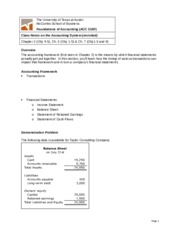29 marzo, 2024

When customers experience delays in payment and poor service due to revenue backlog, it can damage the reputation of your business and make it harder to attract new customers. In today’s digital age, negative reviews and feedback can spread quickly online, making it even more important to address revenue backlog in a timely manner. Fortunately, there are several strategies you can use to overcome revenue backlog and increase your profits. Below we explore the causes and impact of revenue backlog, as well as has anyone used valpak to advertise proven strategies for overcoming it and increasing profits. These methods consider factors like business impact, urgency, complexity, and customer feedback to determine priority.
Reevaluating Pricing Strategies
In this article, we will explore the definition of a backlog, its implications, and provide real-world examples of how it can be used to improve your financial management. Knowing the basics of the backlog’s relationship with revenue and (future) demand can help analysts understand a company and its financial results better. Sometimes, there is an existing backlog simply because all of the terms of a contract have not yet been reached.
- Because the company is receiving more orders each day than it has the capacity to fill, its backlog grows by 1,000 shirts per day until it raises production to meet the increased demand.
- In software development, technical debt is a common phenomenon that arises due to shortcuts or compromises made during the development process.
- It can pertain to a company’s workload buildup, whether financial paperwork must be completed, a backlog in sales order fulfillment, or production capacity.
- Calculating your backlog in the same way every time allows you to see if your revenue is growing or shrinking over a period of time.
- Revenue backlog refers to the total amount of revenue that a company has contracted but has not yet recognized as income.
Organizations should foster a culture of continuous improvement and adaptability, where feedback is solicited, lessons are learned from past experiences, and processes are refined iteratively. In software development, technical debt is a common phenomenon that arises due to shortcuts or compromises made during the development process. The technical backlog encompasses all the tasks related to addressing technical debt, refactoring code, improving system architecture, and enhancing development tools and processes. It ensures that the development team allocates time and resources to address technical challenges and business phone plans maintain the long-term health and sustainability of the product.
Best Practices for Managing Revenue Backlog
Enhancing customer retention and acquisition can help businesses increase revenue and profitability over time. Businesses can focus on improving customer service, developing brand loyalty, and expanding their customer base to increase profits. Streamlining billing and invoicing processes is essential for reducing errors and delays in payment collection. This can be achieved through automation, integration, and simplification of the billing and invoicing process. By automating the process, businesses can reduce the risk of errors and delays, while integration can help ensure that all relevant data is captured and processed in a timely manner. Simplifying the process can also help reduce the burden on staff and improve efficiency.
One of the most immediate effects is delayed delivery of products or services, leading to dissatisfaction among customers and stakeholders. Backlogs can also impede workflow efficiency, increase lead times, escalate project costs, and erode team morale. Moreover, unresolved backlog items accumulate over time, exacerbating the problem and hindering the organization’s ability to adapt to changing market dynamics. Effective backlog management strategies hinge on robust communication channels between sales and finance departments. By fostering a collaborative environment, organizations can ensure that both teams are aligned on priorities and understand the implications of revenue backlog on cash flow management. By employing these strategies, businesses can better manage their revenue backlog, ultimately leading to improved cash flow management and financial stability.
Differences between recognized revenue and backlog
Dive into the intricacies of revenue backlog and discover effective strategies to monitor and manage it for optimal cash flow performance. Not all backlog items carry the same weight; hence, it is crucial to assess which items are most urgent and significant to the business. This involves evaluating factors such as the potential impact on cash flow management, client relationships, and project timelines. The presence of backlog can have far-reaching implications for an organization’s performance, productivity, and customer satisfaction.

A healthy backlog can enhance a company’s perceived value, while a diminishing or excessively large backlog may raise red flags about operational efficiency or market demand. Consequently, understanding and managing revenue backlog is essential for maintaining a favorable financial position in the eyes of investors. To gain a comprehensive understanding, it’s crucial to delineate the different types of backlogs prevalent across industries. One of the most common classifications is based on the nature of the tasks or items contained within the backlog. This categorization typically includes product backlog, sprint backlog, technical backlog, and financial backlog, among others.
Each type serves a specific purpose within its respective domain, such as software development, project management, or financial operations. Understanding the relationship between backlog and cash conversion score for cloud companies cash flow timing is crucial for effective cash flow forecasting. Businesses must assess when backlog items are expected to convert into recognized revenue and subsequently, cash. By aligning backlog management with cash flow expectations, companies can better prepare for potential shortfalls or surpluses. Investors and stakeholders often assess backlog levels to gauge a company’s future earning potential.
